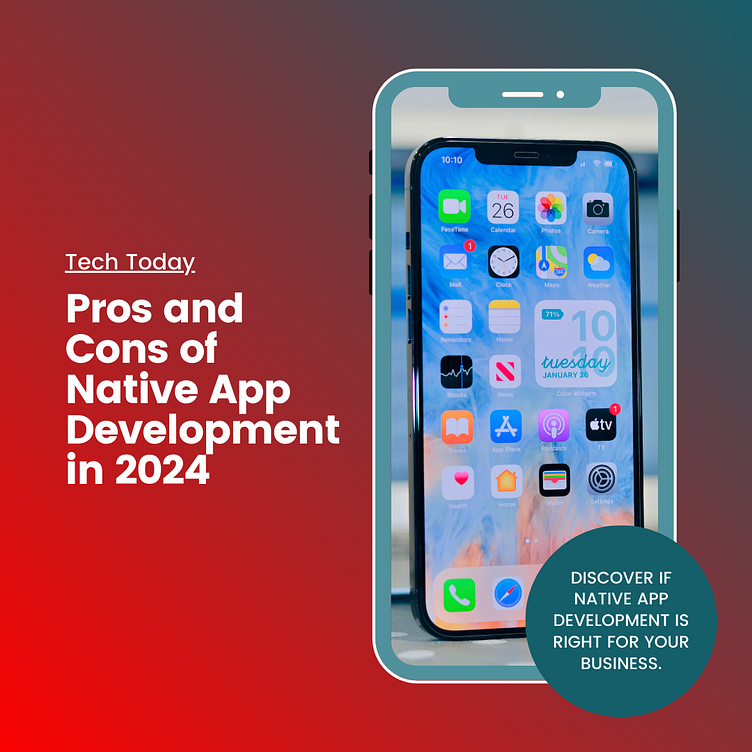Pros and Cons of Native App Development in 2024
Native app development involves creating applications specifically for a particular mobile platform using the native programming languages and tools provided by the platform. While native apps offer numerous advantages, they also come with their own set of challenges. Let's explore the pros and cons of native app development:
Pros:
Performance: Native apps are known for their high performance and responsiveness. They are optimized to take full advantage of the device's hardware capabilities, resulting in faster load times and smoother user experiences.
User Experience: Native apps offer a superior user experience compared to hybrid or web apps. They can leverage platform-specific design guidelines and features, providing users with a consistent and intuitive interface.
Access to Device Features: Native development allows access to a wide range of device features such as camera, GPS, accelerometer, and more. Developers can integrate these features seamlessly into their apps, enhancing functionality and user engagement.
Offline Functionality: Native apps can store data locally on the device, allowing users to access content and perform tasks even without an internet connection. This offline functionality is crucial for apps that require continuous usage in various environments.
Security: Native apps offer better security compared to web apps since they are distributed through official app stores and undergo rigorous review processes. Additionally, developers can implement encryption and other security measures to protect user data.
Cons:
Development Time and Cost: Developing native apps for multiple platforms (iOS, Android) requires separate codebases and development efforts. This increases the overall development time and cost compared to cross-platform or hybrid approaches.
Platform Dependence: Each platform (iOS, Android) has its own set of development tools, languages, and guidelines. This means developers need expertise in multiple programming languages (Swift/Objective-C for iOS, Java/Kotlin for Android), which can be challenging and time-consuming.
Maintenance Challenges: Maintaining separate codebases for different platforms can be complex and resource-intensive. Developers need to ensure that updates and bug fixes are implemented consistently across all versions of the app, leading to additional overhead.
App Store Approval Process: Submitting native apps to app stores involves strict approval processes and guidelines. Any violations or issues can lead to rejection or delays in app deployment, affecting the overall release schedule.
Limited Reach: Native apps are platform-specific, meaning they can only run on the operating system for which they were developed. This limits the potential audience reach compared to web or cross-platform apps that can be accessed across multiple devices and platforms.
In conclusion, native app development offers unparalleled performance, user experience, and access to device features but comes with drawbacks such as higher development costs, maintenance challenges, and platform dependence. Ultimately, the choice between native, hybrid, or web app development depends on factors such as project requirements, budget, and target audience.
